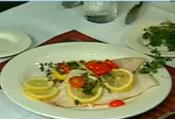I have about 10 days to go on my first Whole 30. I am just now getting to the point where I miss some of the variety I had with my old eating habits. I plan to change it up a bit this week and include some zucchini hummus and start learning to eat less meat and more fish, while continuing to add lots of veggies to every meal.
There has been a lot of talk in the last few days about weighing yourself while doing the Whole 30. I know that is against the rules, however, when my clothes started to fit differently I just had to know what the exact number was. After reading some blogs about this issue I now realize that the number doesn't matter. As long as my clothes ARE fitting better and I am working towards a more healthy relationship with food, the number makes no difference.
Two very inspiring blogs about this issue are:
http://atransparentlife.com/2012/03/03/whole30-and-getting-wholly-healthy/#comment-411"
http://whole9life.com/2012/03/5-reasons-to-break-up-with-your-scale/
One of my favorite things to do is to watch cooking shows and then see how I can change dishes to make them Whole 30 approved. This morning I watched Alex Guarnaschelli make Papillote of Striped Bass. There really are not many changes necessary to make this Whole 30. I have put the recipe below after changing it only slightly. I have not made it yet but plan to this week. Tell me what you think.
Best,
Lelia
8 tablespoons extra-virgin olive oil
4 (8-ounce) pieces striped bass, pin bones removed, skin-on
(or any solid white fish you prefer)
Kosher salt and freshly ground black pepper
2 tablespoons chopped fresh dill fronds
2 tablespoons chopped flat-leaf parsley
1 lemon, cut into thin slices and pits discarded
For the Aioli (similar to how you would make homemade Mayo)
2 cloves garlic, peeled and minced
*2 egg yolks
1/2 cup extra-virgin olive oil
2 limes, juiced
Arrange 2 shelves in the oven at a fair distance from each other. The foil-enveloped fish will need some room to puff and expand as it cooks. Better to rearrange the oven racks while the oven is not yet hot. Preheat the oven to 400 degrees F.
Spread about a 2-foot sheet of foil on a flat surface with 1/2 of it hanging off the counter in front of you. Put the fish, skin side down, horizontally, onto the foil near the end of the counter leaving about 1 1/2-inches of foil on both sides. Season the flesh side of the fish with salt and pepper, to taste, and sprinkle with some dill, parsley and a few lemon slices. Drizzle about 2 tablespoons oil on top of the fish. Fold the foil back over the fish and fold in the sides of the foil twice. Leaving some air in the package, roll the top of the foil down twice gathering the top to make a window , leaving about 6 to 8 inches between the fish and the top. It should look like a small package, with all the sides sealed. There should be enough room left around the fish to allow for the steam to build up as it cooks, creating an inflated envelope around the fish. Repeat with remaining 3 pieces of fish.
Put the garlic cloves in the bowl of a food processor and pulse until the garlic is finely chopped. Add the egg yolks and pulse to blend. With the processor running, slowly add the 1/2 cup of olive oil, through the opening at the top, in a steady stream. Add the lime juice and pulse to incorporate. Season, to taste, with salt and pepper. Cook s Note: If the mixture is too thick, add a little cold water to loosen the texture. Transfer the mixture to a serving bowl, cover and refrigerate.
Using 2 baking sheets, put 2 of the foil envelopes on each sheet and add a little water to the bottom of the sheet pan. This water will create additional steam in the oven as the fish cooks. Put the baking sheets on 2 shelves of the oven and bake, undisturbed, until the envelopes begin to puff, about 12 to 15 minutes. Remove from the oven and immediately transfer to 4 dinner plates. To serve, break open the foil and drizzle with the aioli.
Use caution in consuming raw and lightly-cooked eggs due to the slight risk of Salmonella or other food-borne illness. To reduce this risk, we recommend you use only fresh, properly-refrigerated, clean, grade A or AA eggs with intact shells, and avoid contact between the yolks or whites and the shell.

No comments:
Post a Comment